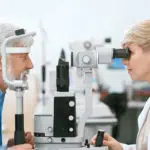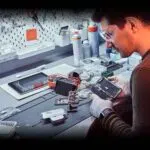Bladder Health Month is observed every year in November to highlight the importance of the Bladder — also known as Urinary Bladder, various disorders that affect the bladder, how to prevent diseases that affect the bladder, and how to treat them. The bladder joins the kidneys, ureter, urethra, and some other minor organs to form the urinary system. They collectively eliminate waste from the body, regulate blood volume and blood pressure, control levels of electrolytes and metabolites, and regulate blood pH. They form one of the most important systems in the body as without them functioning well, toxic substances stay in the body. An infection to any part of the system is called a Urinary Tract Infection (U.T.I.).
History of Bladder Health Month
The study of how well the bladder, sphincters, and urethra hold and release urine is called the “Urodynamic” study. Urodynamic studies show how well the bladder works and why there could be blockages or leaks. Over the years, the study of the entire urinary system has been known as Urology.
Although Urology was only officially considered a separate surgical specialty in the early 20th century, its roots can be traced as far back as the Renaissance. Genitourinary diseases have been present since the beginning of the human race, but the first treatise was written solely by a Spanish physician named Francisco Diaz in 1588. “The Treatise on all the Diseases of the Kidneys, Bladder, Urine, and Growths on the Penis” was a major milestone in urology and medical history in general, as it was one of the first works in medical literature to be written in a common language. This improved the lives of countless patients with urologic conditions as it allowed the wide dissemination of his collected urologic knowledge to practitioners.
Another person in history that made great strides in urology was Maximilian Nitze, a German urologist. He specialized in research of kidney disorders and other urological problems and he is credited with the invention of the modern cystoscope; a device used in diagnostics of the bladder alongside Viennese instrument maker Joseph Leiter. The Nitze–Leiter cystoscope was demonstrated publicly for the first time in 1879. In 1897, Hugh Hampton Young, who is now known as the father of modern American urology began practicing at the clever recommendation of his praised mentor, William Halsted, and with indirect support from the well-accomplished pathologist William Welch. The field was not organized and few well-defined treatments were available for Urological diseases. He made great strides to support how we treat urological diseases today.
Bladder Health Month timeline
“The first treatise on urology” is written solely by Spanish physician, Francisco Diaz.
The Nitze–Leiter cystoscope is first publicly demonstrated.
Hugh Hampton Young, who is now known as the father of modern American urology begins his practice of urology when he took charge of the Department of Genito-Urinary Surgery at Johns Hopkins Hospital.
Bladder Health Month is celebrated in the United States
Bladder Health Month FAQs
What is Enuresis?
Enuresis is a repeated inability to control urination and most occur in the elderly.
Is it possible for your bladder to heal itself?
The bladder is an expert at repairing itself. When the organ is injured by infection or injury, it can swiftly heal by utilizing specialized cells in its lining to rebuild tissue and restore a barrier against hazardous elements contained in urine.
What vitamins are good for bladder health?
Vitamin C from fruits and veggies is associated with decreased urinary urgency.
How to Observe Bladder Health Month
Go for a checkup
Observe Bladder Health Month by going for a checkup. This ensures that you keep your bladder healthy and can quickly detect any anomaly.
Drink lots of water
Take care of your bladder and entire urinary system by drinking lots of water. Water regulates your pH level and so is very good for the Bladder
Spread awareness
Spread awareness of Bladder Health Month with posts on social media. With social media, others can see what the month is about and do well to take care of their Bladder as well.
5 Surprising Facts About The Urinary System
Generate urine every 10 to 15 seconds
The kidneys generate urine every 10 to 15 seconds.
The bladder can store 16 ounces
A healthy adult bladder can store up to 16 ounces of urine for two to five hours.
Healthy urine appears light yellow
The color of healthy urine is light yellow or the color of straw.
Pink urine indicates the presence of blood
When urine becomes pink, it indicates the presence of blood and a much-needed visit to the Doctor.
Dark colored urine and dehydration
Dark or honey-colored urine shows signs of not drinking enough water.
Why Bladder Health Month is Important
It reminds us to take care of our health
With Bladder Health Month, we are reminded to take care of one of the most important parts of our body, the bladder. It does so much more than just storing and passing out urine.
It reminds us to drink water
Bladder Health Month comes with the reminder to drink lots of water. Drinking lots of water doesn’t just help the bladder but makes other systems function optimally as well.
It helps the econony
When more people take care of their Bladder, there’ll be fewer visits to the hospital due to Urinary Tract Infections or illnesses. This helps to build the economy as resources are not used up.
Bladder Health Month dates
| Year | Date | Day |
|---|---|---|
| 2025 | November 1 | Saturday |
| 2026 | November 1 | Sunday |
| 2027 | November 1 | Monday |
| 2028 | November 1 | Wednesday |
| 2029 | November 1 | Thursday |






















































































